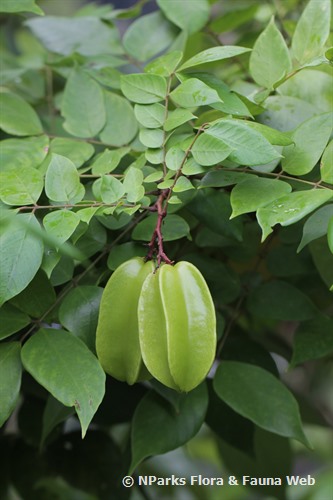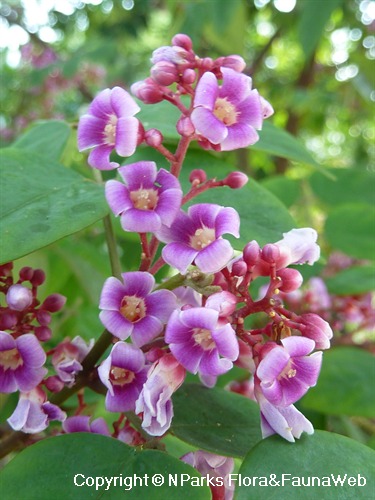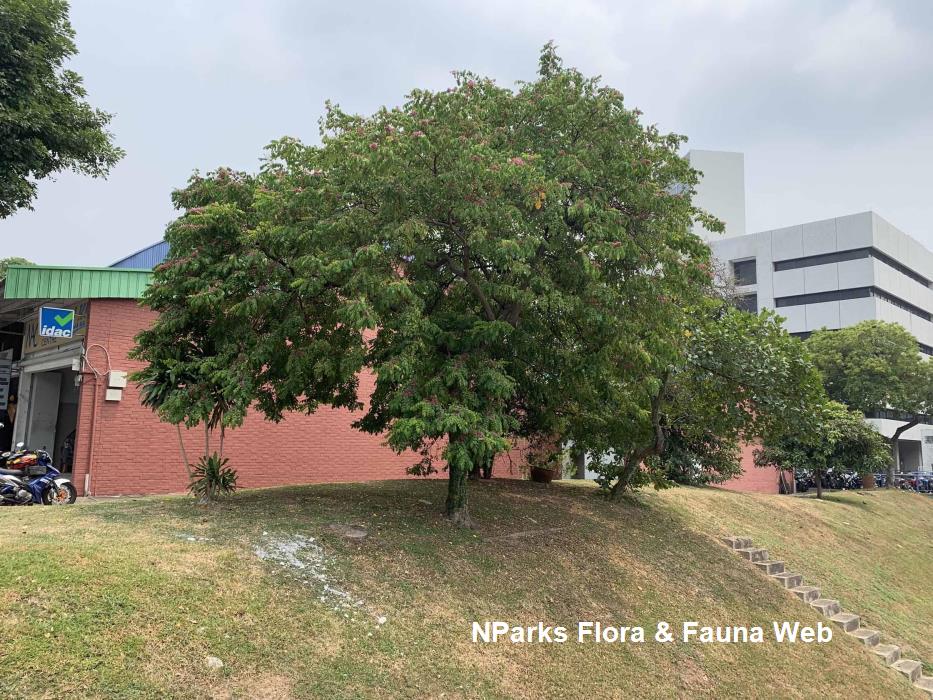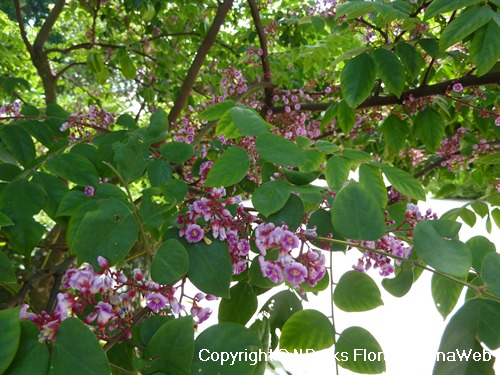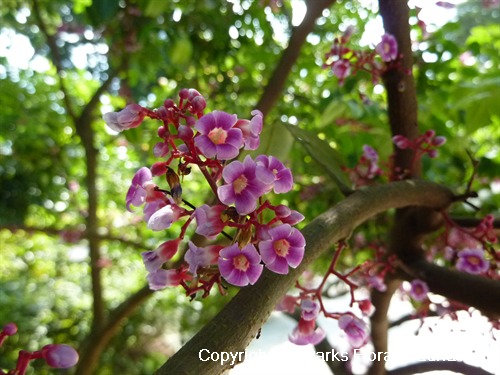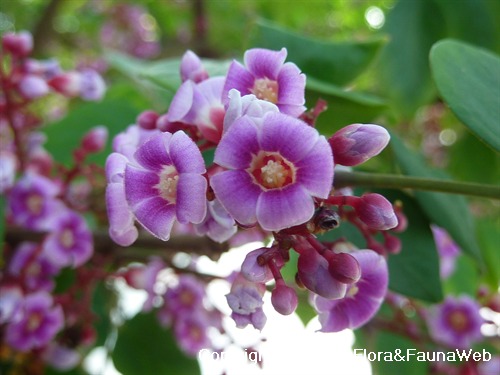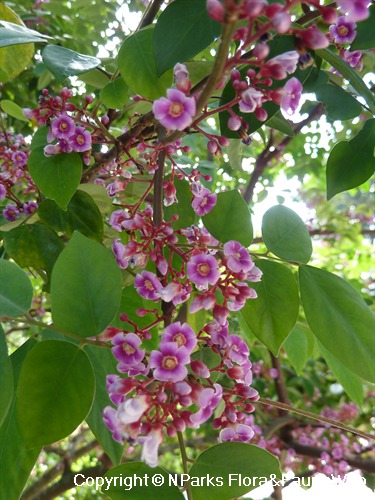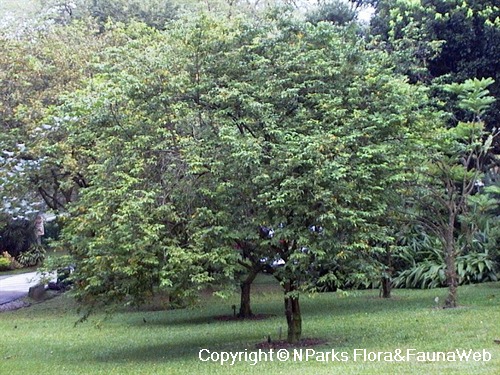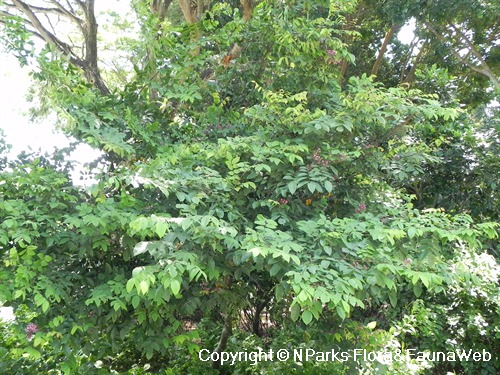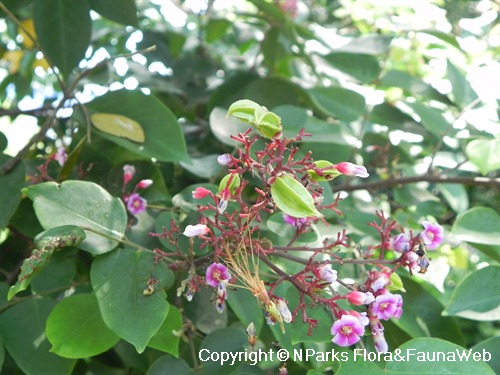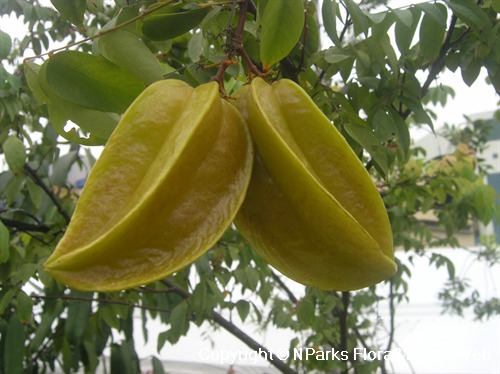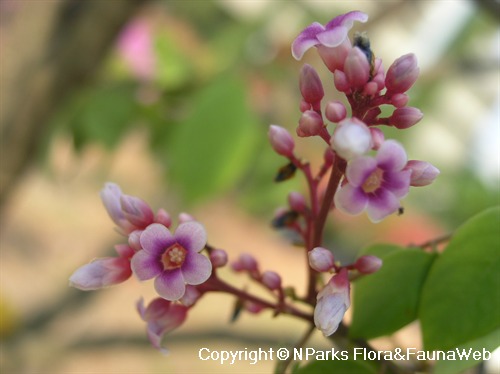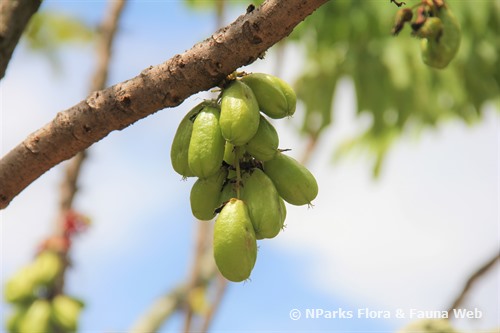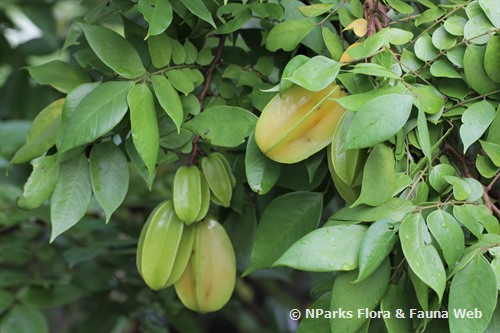
Back
Averrhoa carambola L.
| Family Name: | Oxalidaceae |
| Synonyms: | Averrhoa acutangula Stokes, Sarcotheca philippica (Vilar) Hallier f. |
| Common Name: | Star Fruit, Belimbing Besi, Belimbing Manis, Kembola, Carambola, Caramba, Country Gooseberry, Belimbing Sagi, Kamrak, 杨桃, 阳桃 |
Averrhoa carambola, also known as Star Fruit, is a tree that can grow up to 14 m tall. Its fruit is star-shaped in cross-section and ripens to a bright yellow. The fruit has a tangy, sour taste and can be enjoyed fresh or made into jam.
Name
Classifications and Characteristics
| Plant Division | Angiosperms (Flowering Seed Plants) (Dicotyledon) |
|---|---|
| Plant Growth Form | Tree |
| Lifespan (in Singapore) | Perennial |
| Mode of Nutrition | Autotrophic |
| Maximum Height | 14 m |
Biogeography
| Native Distribution | Sri Lanka, India, Indonesia, Malaysia |
|---|---|
| Native Habitat | Terrestrial |
| Preferred Climate Zone | Tropical, Sub-Tropical / Monsoonal |
| Local Conservation Status | Non-native (Spontaneous (Casual)) |
Description and Ethnobotany
| Growth Form | Tree is slow-growing, much branched, broad and bushy, with branches usually drooping. |
|---|---|
| Trunk | Bark is light brown, smooth or sometimes finely fissured. |
| Foliage | Green leaves pinnate, alternate arrangement and measuring about 15 - 25 cm long, each leaf has about 7 - 9 leaflets, sensitive to shock and will close up when the branch is shaken. |
| Flowers | Light purple flowers borne on a panicle inflorescence about 2 - 5 cm long, each flower measuring about 0.6 cm wide, 5-petaled. |
| Fruit | Fruit is an indehiscent berry measuring about 5 - 8 cm long, turns from yellowish-green to orange-yellow when ripen, contains 5 seeds. |
| Cultivation | Prefers well-drained, slightly acidic soil. Grows well on peat but cannot tolerate drought, salinity and flooding, though it have high water requirement. |
| Etymology | Genus Averrhoa is named after Averrhoes (1126 - 1198), a well-known Arabian philosopher and physician and also a translator of Aristotle's work. Species carambola is from the word "karambal" (Marathi language) which also means carambola tree. |
| Ethnobotanical Uses | Edible Plant Parts : Edible Fruits Food (Fruit or Vegetable): Fresh fruits are used in salads, punch bowls, juice, preserves, jam and jelly. Medicinal: Fruit can be consumed as a laxative. Timber & Products: Wood is used for firewood. The unripe fruit can be processed and be used in dyeing. |
Landscaping Features
| Desirable Plant Features | Ornamental Flowers |
|---|---|
| Thematic Landscaping | Economic Garden |
Fauna, Pollination and Dispersal
| Fauna Pollination Dispersal Associated Fauna | Bird-Attracting, Caterpillar Moth Food Plant (Leaves) |
|---|
Plant Care and Propagation
| Light Preference | Full Sun |
|---|---|
| Water Preference | Moderate Water, [Remarks] (Cannot stand flooding and needs good drainage.) |
| Plant Growth Rate | Moderate |
| Rootzone Tolerance | Fertile Loamy Soils, Well-Drained Soils |
| Transplanting Tolerance | Unknown / Unselect |
| Maintenance Requirements | Unknown / Unselect |
| Diseases | The fruit is subject to fruit fly, fruit moths and fruit spotting bugs in those areas having these infestations. |
| Propagation Method | Grafting, Seed |
| Propagation Method Remarks | Budding |
Foliar
| Mature Foliage Colour(s) | Green |
|---|
Floral (Angiosperm)
| Flower Colour(s) | Pink |
|---|---|
| Flowering Opening Time | Daytime |
Fruit, Seed and Spore
| Mature Fruit Colour(s) | Yellow / Golden |
|---|---|
| Mature Fruit Texture(s) | Waxy |
Image Repository
Others
| Master ID | 1443 |
|---|---|
| Species ID | 2736 |
| Flora Disclaimer | The information in this website has been compiled from reliable sources, such as reference works on medicinal plants. It is not a substitute for medical advice or treatment and NParks does not purport to provide any medical advice. Readers should always consult his/her physician before using or consuming a plant for medicinal purposes. |

